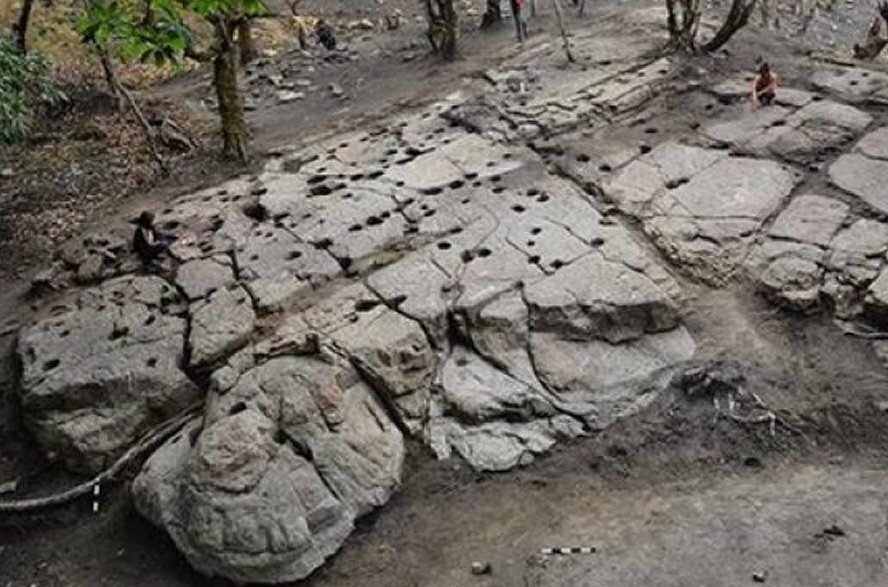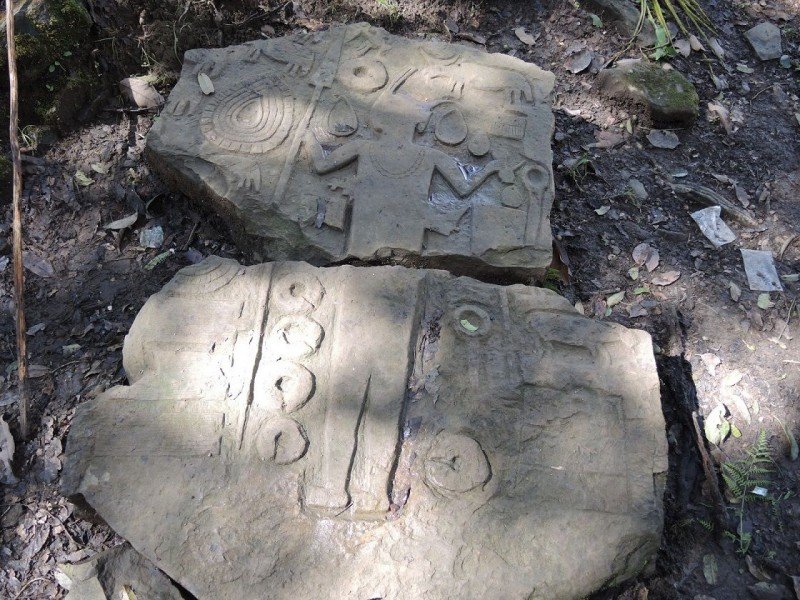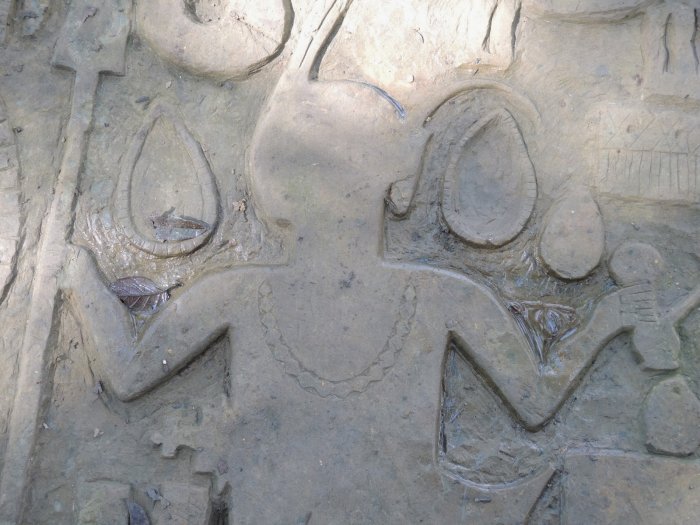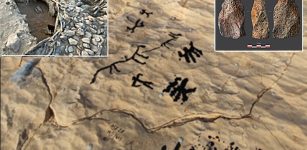Mystery Of Vangchhia Ancient Site: Water Pavilion And Ingenious Idea Of Water Harvesting
Conny Waters - AncientPages.com - Researchers believe that holes in slopes of Mizoram’s hills were to channel water into rock fissures.
As climate change and extreme weather events push the world towards growing conflicts over water, a lost civilisation in Mizoram that turned rocks into hidden reservoirs, could hold the key to water conservation in extreme conditions.

Ingenious effort: Rainwater was trapped in holes to be stored in the fissures and veins of the rocks. | Image source
In January 2016, the Archaeological Survey of India (ASI) announced the discovery of a "living history museum" at Vangchhia, a village in Mizoram's Champhai district bordering Myanmar.
The site, measuring about 45 sq km and located 260 km from Aizawl, has yielded pictographs etched on large stone slabs, menhirs - large standing stones - and a necropolis - a large cemetery - among other artefacts. The area is part of the Lower Himalayas, and has rows of steep hills largely made up of various kinds of sandstone shading from light grey to blackish.

Ancient traces of the Mizoram civilization. Image credit: Dr Malsawmliana, Assistant Professor, Govt. T Romana College, Aizawl
The ancient people of Vangchhia carved terraces on these rocks for their settlement - the main excavated site consists of 15 such terraces.
See also:
Mystery Of The Ancient Forgotten Mizoram Civilization And Lost City Of Vangchhia
But what fascinated the archaeologists the most was a water pavilion and strategically drilled holes - between one feet and one metre across - spread over several sandstone slopes.
The grey sandstone is softer and home to the holes while the harder black rock is used for menhirs, ASI researchers said.
In two years of study since the discovery of the Vangchhia site, researchers have arrived at some theories behind the "seemingly simple science" of water harvesting, perfected several centuries ago, which could sustain local populations for at least a year.
"It is remarkable how they trapped rainwater flowing down the slopes by making holes to let the water flow in and be stored in the fissures and veins of the rocks. When we began excavating in 2015-2016, we wondered why the people who lived in and around Vangchhia did not make water tanks which they appeared capable of," Sujeet Nayan, who heads ASI's Aizawl Circle, told The Hindu.
Denying enemies easy access to water storage areas is believed to have been one of the reasons behind the holes.

Lost and forgotten Mizoram civilization. Image credit: Dr Malsawmliana, Assistant Professor, Govt. T Romana College, Aizawl
"Most of the ethnic groups that inhabited these areas were at war, and the possibility of raiders poisoning water reservoirs or stealing water could have made locals devise this strategy to dissuade those not familiar with the topography," Mr. Nayan said.Water harvesting, however, seems to be at the heart of the activity with the nearest river, the Tlau, 12 km away as the crow flies beyond several hills.
But the archaeologists have not been able to accurately date the Vangchhia settlement. "When we excavated the place three years ago, we thought the ruins were of the 15th century. However, the Birbal Sahni Institute later said the place dates back to the 6th century," Mr. Nayan said.
Adding to the unanswered questions, less than a week ago, an ASI team discovered neolithic caves near Vangchhia, indicating that the lost civilisation could be much older.
"These archaeological relics are not confined to Vangchhia and are found all over Champhai district. There are at least four more major sites - Farkawn, Dungtlang, Lianpui and Lunghunlian - that are yet to be excavated extensively with hundreds of menhirs and pictographs that tell stories of a forgotten past," P. Rohmingthanga, convener of the Mizoram Chapter of Indian National Trust for Art and Cultural Heritage (INTACH), said.
Written by Conny Waters – AncientPages.com Staff Writer




















